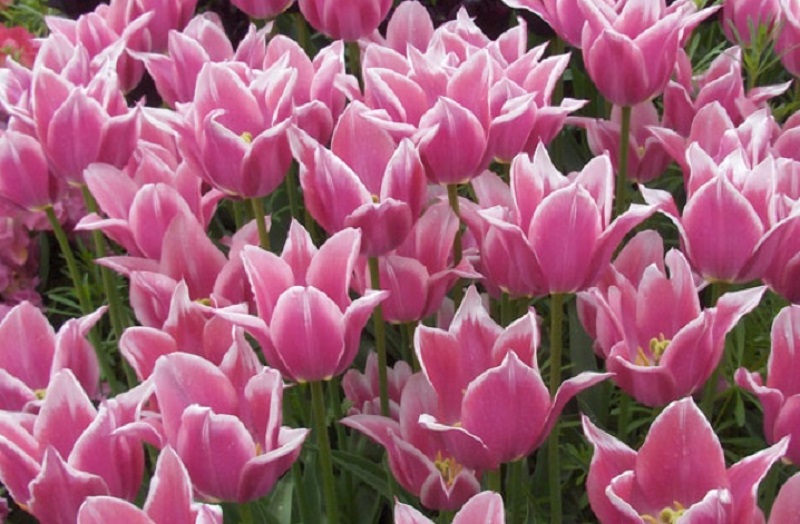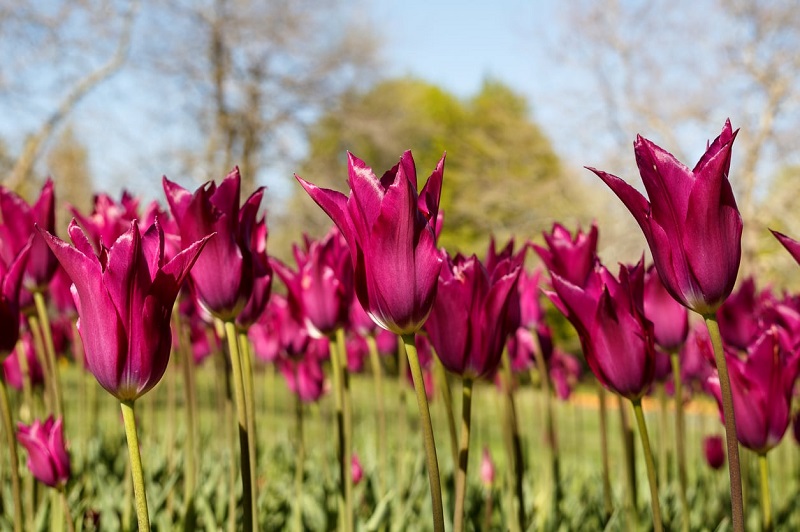Lily-Flowered Tulips, renowned for their slender, lily-like petals and elegant appearance, are a stunning addition to any garden or floral arrangement. Native to the tulip family, these beautiful flowers are celebrated for their unique shape and vibrant colors. This comprehensive guide explores the distinctive features of Lily-Flowered Tulips, including their historical background, botanical classification, growing conditions, and care requirements. Whether you’re an experienced gardener or a novice, this article will provide you with all the essential information needed to successfully cultivate and appreciate these exquisite tulips.
Historical Background
Origin and Development
Lily-Flowered Tulips emerged from the mid-20th-century hybridization efforts aimed at combining desirable traits from various tulip species. These hybrids were developed to capture the elegance of lily-shaped flowers while maintaining the vibrant colors and hardy nature of tulips. The creation of Lily-Flowered Tulips involved selecting and crossing species to enhance bloom shape and color diversity, resulting in a flower that offers both beauty and resilience.

Breeding History
The hybridization process that led to Lily-Flowered Tulips focused on merging the aesthetic qualities of lily-like petals with the robustness of tulips. By crossing different tulip varieties, breeders aimed to produce a flower with elongated, slender petals and a rich color range, giving rise to the distinctive Lily-Flowered Tulips we admire today.
Botanical Classification
Family and Genus
Lily-Flowered Tulips belong to the Liliaceae family and the Tulipa genus. They are a subset within the tulip family known for their unique floral structure, characterized by their lily-like appearance. This classification highlights their place in the broader context of tulip varieties.
Hybrids
As hybrids, Lily-Flowered Tulips inherit a blend of traits from their parent species, resulting in flowers with elongated petals and a distinctive shape. This hybrid nature contributes to their unique appearance and adaptability in various growing conditions.
Characteristics of Lily-Flowered Tulips
Flower Structure
Lily-Flowered Tulips are distinguished by their slender, elongated petals that create a lily-like effect. These petals are typically smooth and rounded, giving the flowers a refined, elegant look. They come in a wide range of colors, including red, pink, yellow, and white, adding a vibrant touch to any garden or floral arrangement.
Plant Size and Growth
Lily-Flowered Tulips generally reach a height of 12 to 18 inches (30 to 45 cm). Their compact stature makes them suitable for various garden settings and container planting. The foliage is lance-shaped and grows from the base of the plant, complementing the flowers with a neat, tidy appearance.
Growing Conditions for Lily-Flowered Tulips
Climate and Temperature
Lily-Flowered Tulips thrive in temperate climates with a cold winter period. Ideal temperatures range from 35°F to 65°F (1.7°C to 18°C). These tulips require a cold dormancy period to ensure successful blooming in the spring, making them well-suited for regions with distinct seasonal changes.
Soil Requirements
These tulips prefer well-draining soil, such as sandy loam or loamy soil, with a pH level between 6.0 and 7.0. Proper drainage is essential to prevent waterlogging and bulb rot, ensuring healthy growth and vibrant blooms.
Light Requirements
Lily-Flowered Tulips need full to partial sunlight to thrive. They should receive at least 4 to 6 hours of sunlight daily. In hotter climates, providing some afternoon shade can help protect the bulbs from excessive heat and prolong their blooming period.
Watering
Regular watering is crucial for Lily-Flowered Tulips, but the soil should be allowed to dry slightly between waterings. Over-watering can lead to bulb rot, so proper drainage is vital to maintaining healthy bulbs and ensuring a successful blooming season.

Planting Lily-Flowered Tulips
Timing
The best time to plant Lily-Flowered Tulips is in the fall, approximately 6 to 8 weeks before the first frost. This timing allows the bulbs to establish roots before winter, leading to a vibrant display in the spring.
Planting Procedure
- Depth: Plant bulbs 4 to 6 inches (10 to 15 cm) deep.
- Spacing: Space bulbs 4 to 6 inches (10 to 15 cm) apart.
- Soil Preparation: Improve soil fertility and drainage by mixing in compost or well-rotted manure.
Care and Maintenance
Fertilization
Apply a balanced fertilizer, such as a 10-10-10 blend, at planting time and again in early spring. Follow the manufacturer’s instructions to avoid over-fertilizing, which can harm the plants and affect bloom quality.
Pruning and Deadheading
Remove spent flowers (deadheading) to encourage the plant to focus its energy on bulb development rather than seed production. Allow the foliage to die back naturally to nourish the bulb for the next growing season.
Pest and Disease Management
- Pests: Common pests include aphids and spider mites. Use insecticidal soap or neem oil to treat infestations.
- Diseases: Monitor for fungal diseases like gray mold and root rot. Ensure proper spacing and drainage to minimize these issues.
Harvesting and Storing
Harvesting
Cut tulips when the buds are still tight but have begun to show color. Place them in water immediately to extend their vase life and enjoy their beauty indoors.
Storing Bulbs
After flowering, allow the foliage to die back naturally. Dig up the bulbs and store them in a cool, dry place until replanting in the fall.
Propagation
Methods
- Division: Divide bulbs when they have multiplied, typically every 3 to 4 years.
- Seed Propagation: Growing from seeds is less common due to the time-consuming nature of this method.
Timing and Conditions
Propagation is best carried out during the growing season. Ensure favorable conditions for rooting and bulb development to achieve the best results.
Notable Varieties and Hybrids
Popular Varieties
- ‘Ballade’: Features striking, elongated petals with a vibrant color.
- ‘White Triumphator’: Known for its elegant white flowers.
- ‘Marilyn’: Offers unique and attractive floral traits.
Cultural and Aesthetic Significance
Symbolism
Lily-Flowered Tulips symbolize beauty, grace, and renewal, making them a popular choice for various cultural and decorative contexts.
Use in Floral Arrangements
Due to their compact size and elegant appearance, Lily-Flowered Tulips are frequently used in floral arrangements for weddings, events, and seasonal decorations.
Conclusion
Lily-Flowered Tulips are a remarkable addition to any garden or floral display, offering elegance, beauty, and a unique shape that sets them apart from other tulip varieties. By understanding their growing conditions, care requirements, and distinctive features, you can successfully cultivate these exquisite flowers and enjoy their charm each spring. Embrace the beauty of Lily-Flowered Tulips and enhance your garden with their exceptional appeal.
